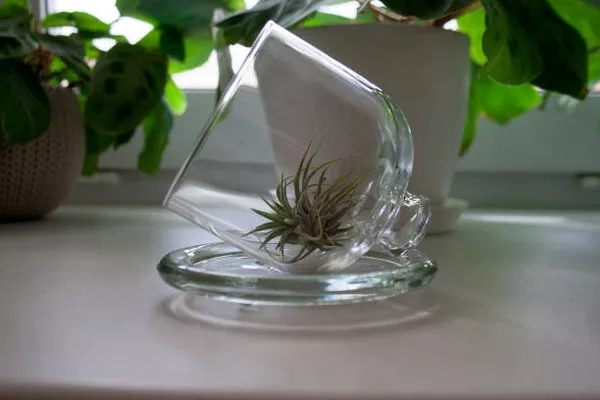Flowers have the remarkable ability to brighten up any space with their vibrant colors and delightful fragrances. Whether you receive a bouquet on a special occasion or simply wish to enjoy the beauty of freshly picked flowers from your garden, preserving them in a vase is an art that allows you to relish their charm for an extended period. In this comprehensive guide, we will explore the best practices for preserving flowers in a vase, ensuring they stay fresh and stunning for as long as possible.
Selecting the Right Flowers
The first step in preserving flowers in a vase begins with choosing the right blooms. Consider the following factors:
Freshness: Opt for flowers that are freshly cut. Look for firm stems and petals that are just beginning to open. Avoid flowers with wilted or discolored petals.
Variety: Different flowers have different lifespans in a vase. Some popular choices for longer-lasting arrangements include roses, chrysanthemums, carnations, and alstroemeria. However, you can experiment with a wide range of flowers for diverse arrangements.
Seasonality: Select flowers that are in season for better availability and longer freshness.
Preparing the Vase
Once you’ve chosen your flowers, it’s essential to prepare the vase correctly. Here are the steps to follow:
Cleanliness: Start with a clean vase. Any residue from previous arrangements can promote the growth of bacteria and reduce the lifespan of your new bouquet. Wash the vase with warm, soapy water, and rinse thoroughly.
Size and Shape: Choose an appropriate vase size and shape for your flowers. The vase should be large enough to accommodate the stems without crowding, allowing for proper water circulation.
Water Quality: Use clean, lukewarm water. Tap water is usually suitable, but if you have hard water, consider using filtered or bottled water to avoid mineral buildup.
Flower Food: Commercial flower preservatives are available and can significantly extend the life of your bouquet. Follow the instructions on the package to mix the flower food with the water in the vase.
Preparing the Flowers
Properly preparing the flowers is crucial for their longevity. Follow these steps:
Trim the Stems: Using sharp, clean scissors or floral shears, cut the stems at an angle, about 1 to 2 inches from the bottom. This angle allows for better water absorption. Remove any leaves that would be submerged in water to prevent bacterial growth.
Remove Excess Foliage: Remove any leaves or petals that may come in contact with the water. Submerged foliage can lead to bacterial contamination.
Recut if Necessary: If the stems have been out of water for an extended period (e.g., during transportation), recut them before placing them in the vase.
Arranging the Flowers
Creating an attractive arrangement is an art in itself. Here’s how to arrange your flowers effectively:
Balance: Start with the largest and tallest flowers as the focal point of your arrangement. Add smaller flowers and filler blooms to create balance and texture.
Odd Numbers: Arranging flowers in odd numbers (e.g., 3, 5, 7 stems of a particular flower) is often more visually appealing than even numbers.
Height and Depth: Vary the heights and depths of the flowers to create a more dynamic arrangement. Cut some stems shorter than others to achieve this effect.
Grouping: Grouping similar flowers together can create a dramatic impact. For example, gather all the roses in one area and surround them with complementary filler flowers.
Caring for Your Arrangement
Once your arrangement is complete, proper care is essential to maintain its freshness:
Placement: Keep your vase out of direct sunlight and away from heating vents, as excessive heat can cause flowers to wilt prematurely. A cool, well-ventilated area is ideal.
Water Change: Change the water in the vase every 2-3 days to prevent bacterial growth and maintain freshness. Be sure to add flower food each time you change the water.
Trimming: Recut the stems every few days, especially if you notice the water becoming cloudy. This will help the flowers continue to take up water.
Mist the Petals: Spritz the petals with a fine mist of water to keep them hydrated and fresh. Some flowers, like hydrangeas, benefit from this extra moisture.
Ethylene Gas: Keep your arrangement away from fruits and vegetables, as they release ethylene gas, which can accelerate the aging of flowers.
Reviving Wilting Flowers
If you notice some of your flowers wilting prematurely, don’t despair. You can try these methods to revive them:
Submerge in Warm Water: Submerge the entire flower and stem in warm water for 30 minutes to an hour. This can help hydrate the petals and revive the flower.
Recut the Stems: Trim the stems and place the flowers back in fresh water with flower food.
Use a Straw: For delicate flowers like tulips, insert a drinking straw through the stem to provide support and encourage hydration.
Conclusion
Preserving flowers in a vase is a delightful way to bring the beauty of nature indoors and enjoy it for an extended period. By selecting the right flowers, preparing the vase and stems properly, arranging the flowers thoughtfully, and providing ongoing care, you can ensure your floral creations remain fresh and vibrant for days to come. With these tips, you’ll be able to create stunning floral arrangements that brighten your home and lift your spirits.


